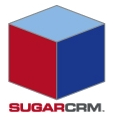1. Joomla Coala Web Social Links
ACoalaWeb Social Links is a Joomla social extension that help site visitors bookmark content on your site as well as follow you through a variety of social networks. You can choose which bookmark and follow us links to display depending on your website needs plus it’s packed full of other configuration options to make it as flexible as possible. CoalaWeb Social Links is a complete social media package to help your site visitors bookmark content, follow you through a variety of social networks and vote for particular content with social buttons.Download: http://coalaweb.com/extensions/joomla-extensions/coalaweb-social-links
2. Joomla Social Share and Vote button
Social Share/Vote Button is a popular Joomla plugin that shows social share or vote button in articles / content. It contains all popular social networks or share/bookmark sites that supports button/badge for vote/share.Download: http://codeboxr.com/product/social-sharevote-button-plugin-for-joomla
3. JoomShareBar
Ultimate Social Sharing for Joomla! / K2- Display as Floating Skyscraper or Horizontal Bar
- Lazy Loading (asynchronous) Buttons = performance!
- Social buttons follow when scrolling your page
- Fits Your website (design it yourself)
Download: http://www.joomarketer.com/joomla-extensions/joomsharebar
4. JExtBOX Social Share Buttons
This plugin adds social share buttons to your article, making it easy for your visitors to submit your articles and build traffic to your website.The plugin supported Mongolian social websites (Biznetwork.mn) and new Google+.
Features
- Postion – The positions (Top, Bottom and Both) of the buttons into your article
- Excluded/included categories, articles
- Excluded/included views (full article, featured, category)
- Show or hide title. Title – The text which is located on the icons
- Custom CSS
- Facebooks og:tags, Twitter tags
- Biznetwork.mn
- Google Plus
5. BT SocialShare plugin
BT Social Share is a joomla extension that add social icons to your joomla article. Extension can be published at various locations in content, with 2 options display top or bottom of article. Plugin has backend settings where you can customize it. You can enable/disable each social network individually or show or hide them on specific sections, categories, individual articles or specific menus.Download: http://bowthemes.com/joomla-extensions/bt-social-share-plugin.html
6. JFBConnect
Complete Facebook, Twitter, Google+ and LinkedIn integration for Joomla! Add Facebook, Twitter and Google+ Login and other Facebook features to your site.Provides Facebook, Google+ AND Twitter registration; Facebook Open Graph; Facebook Invites, Facebook, Google, Twitter and LinkedIn social widgets; Facebook Page Tab & Canvas support.
Download: http://extensions.joomla.org/extensions/social-web/social-display/facebook-integration/7215
7. Joomla Youtube Plugin
YouTube plugin is the best, simplest and the most popular Youtube plugin! Youtube plugin now supports versions 2.5 and 3.0!This simple little YouTube plugin will display the YouTube Flash player in your articles when inserting the YouTube ID for chosen Youtube video, Youtube playlist or Youtube custom player, between a starting youtube tag and an ending youtube tag. Both defined with brackets (simple instruction is included when you install the youtube plugin).
Download: http://extensions.joomla.org/extensions/social-web/social-media/video-channels/3659
8. KA Facebook Like Box
Fan box also known as Like box is a Joomla Module that displays Facebook Fanbox/Likebox into Joomla websites.The Fan Box lets users:
- See how many users are already fans/like
- Read recent posts from the Page
- Let visitors become a fan with 1-click
What You Need:
Before you add a Like Box to your website, you need the following:
- A Joomla 1.5, 1.6, 1.7 or 2.5 website,
- Ability to install modules
- A Facebook Page that promotes your website
Download: http://www.khawaib.co.uk/component/kadirectory/downloads/item/4-ka-facebook-live-stream.html
9. We Ultimate Facebook Comments
Facebook comments WITH SEO BOOST! for your Joomla site is here! With the plugin you can add the ability to your visitors to comments your artciles with their Facebook Account! With module you can add the same ability to any page/menu you want! Ultimate Facebook Comments supports multiply components intergration like K2,LyftenBloggie etcDownload: http://extensions.joomla.org/extensions/social-web/social-comments/13880
10. Joomla Simple Disqus Comments
Simple Disqus Comments is a Joomla! plugin that enables you to integrate Disqus Comments on your website.By using unique identifiers, Simple Disqus Comments is compatible with all SEF extensions and also with JoomFish. Using unique identifiers, Simple Disqus Comments will always identify the Disqus comments associated with an article regardless of the article URL.
Simple Disqus Comments is able to automatically detect Disqus language based on article language.
Simple Disqus Comments enables you to separate or merge Disqus comments on multilingual websites.
Download: http://extensions.joomla.org/extensions/social-web/social-comments/19482


























